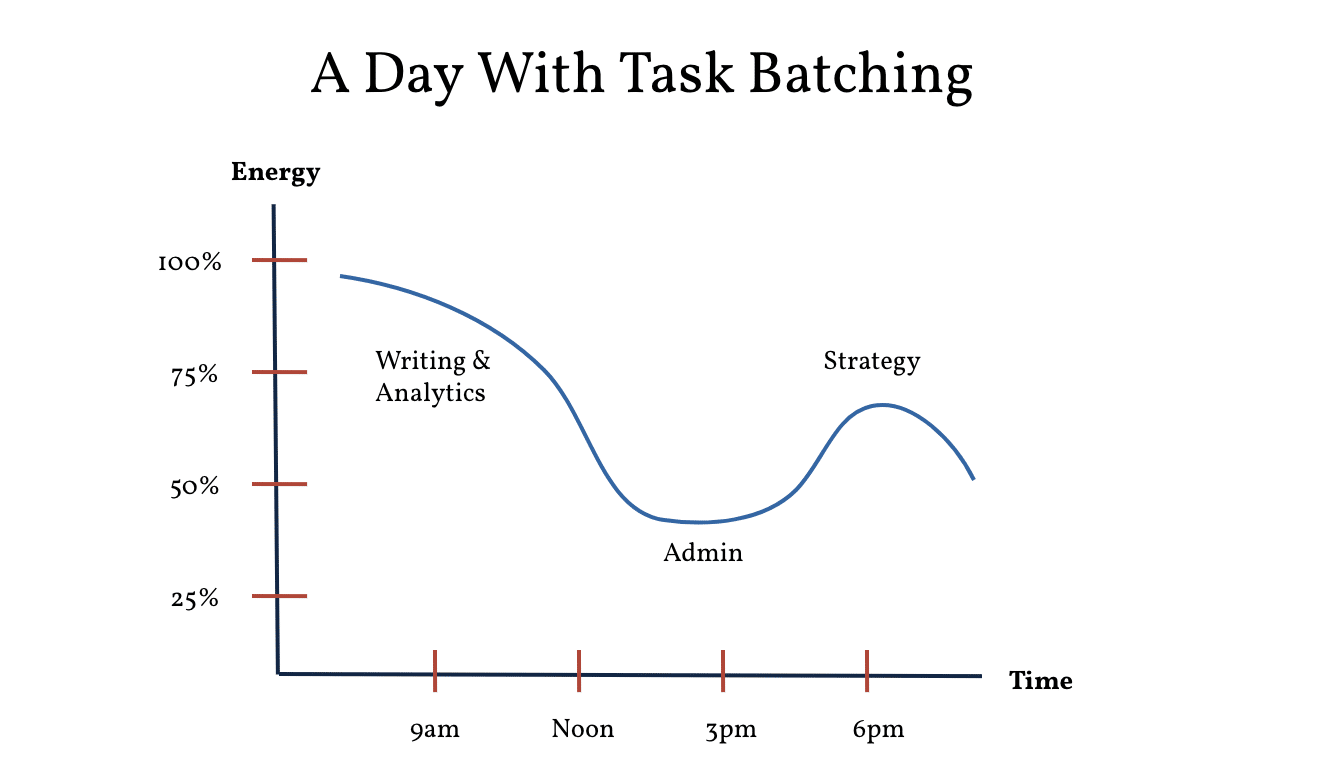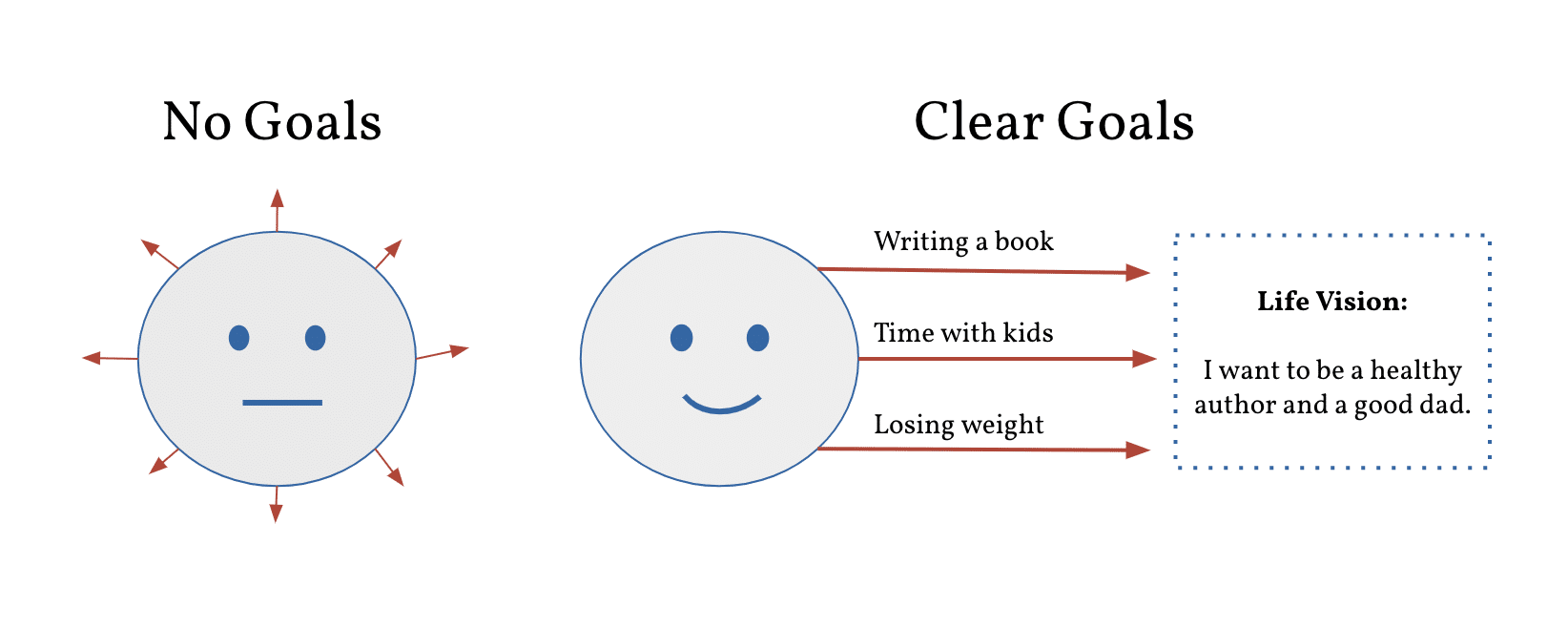7 Practices to Increase Your Productivity
Reading Time: 6 minutes
We live in the era of productivity.
And while some people take the pursuit of getting more done in less time too far, we all benefit from becoming more productive penguins:
Despite what you’ll find in 99% of articles on the topic, increasing your productivity isn’t as simple as adopting a random set of general practices like making your bed every morning or doing 10 jumping jacks every time you feel stressed.
Instead, increasing your productivity comes from cultivating a core set of practices that align with your specific goals and style. To do so effectively, you need time, intention, and a willingness to experiment.
Below, I discuss 7 practices that have helped me increase my productivity. As you read through each practice, feel free to discard the ones that seem unhelpful and experiment with the ones that may benefit you on your journey.
1. Establish a morning routine.
I started experimenting with morning routines two years ago, and it’s become an indispensable part of living a productive and fulfilling life.
A good morning routine grounds you and prepares you to have a productive day, regardless of whether you are hungover, nervous about an interview, excited about a date, or living in the pre-coffee fog.
Despite what self-help gurus across the globe will profess, there is no one-size-fits-all approach for a morning routine. It’s highly specific to your goals and preferences.
You have to identify what you want out of your routine and experiment with different practices (cold showers, meditation, reading, affirmations, journaling, etc.) to help you get there.
I’ve written about a low-time commitment routine that has worked for me. This routine is optimized for my goal of spending as little time and money as possible to get in the right headspace to tackle the day. As my goals change, my routine will change.
2. Write down your top 3 priorities.
Every morning before I start working, I write down 3 things that will make my day productive if I complete them. For balance, I include at least one work-related item and one personal item.
This list works for three reasons. First, it clarifies my priorities. On any given day, I have 25+ things that I can work on, but narrowing it to 3 enables me to identify the tasks that are most important.
Second, it keeps me focused during the day. When my brain starts spinning after I receive an unexpected email from my boss or something goes awry in my personal life, I look back at my list and remember what I set out to achieve.
And finally, the list protects me from going to bed feeling unproductive or overwhelmed with everything I need to do. If I accomplish the 3 things on the list, I allow myself to rest easy knowing that I did my work for the day even if I still have a long backlog of things to do.
3. Batch your tasks.
The average person checks email 15 times per day. Why? Because they’re addicted, not because it’s necessary. This addiction has costs. It increases stress, reduces focus, and gives us a false sense that we’re doing something productive.
Instead of satisfying the urge to check your email every 30 minutes, try checking it twice a day at scheduled times instead. This is called task batching, and it works. It reduces the effects of task switching and allows you to focus on the matter at hand.
You can batch all of your tasks, not just email. In the past, I’ve experimented with labeling my tasks using 3 to 5 different categories and identifying the best times during the day to work on tasks that fall in each category. For example, all of my tasks roll up into 4 categories: admin, analytics, writing, and strategy.
In the morning when I’m fresh and have a full tank of creativity, I do my writing and analytical work. In the afternoon when I hit the predictable post-lunch lull, I’ll cruise through my admin tasks. And when I get my second wind in the evening, I’ll switch to strategy-oriented tasks. My day looks something like this:
What your day looks like will depend on your work and preferences, but it can be really effective if you batch your tasks in smart ways.
4. Own your phone.
We live in the most distracting time in history. The smartest people in the world are spending 80 hours a week fighting to win the war for our attention. Our phones are the home of their work. And while they get rich by creating popular mobile applications, we get addicted.
These applications have unintended consequences that reduce our ability to focus and get things done. To be more productive, we need to fight back and transform our relationship with our phones. The technology we use should serve us, not stunt us.
The best tactic I’ve encountered to reduce the adverse effects of my phone on my productivity is to spend 10 minutes doing one thing:
Turn off all notifications.
You don’t need to know the exact moment when someone likes your Instagram post, when Tim Ferriss tweets, when a new New York Times article is published, or even when a friend messages you.
These notifications are nothing but small dopamine hits that contribute to our cultural ADHD and prevent us from focusing on what matters.
You can make all kinds of excuses about why you shouldn’t do this, but if you want to be more productive, at least try it out for a week.
5. Learn to say no.
Embracing the “yes culture” will crush your productivity. Your time and energy are limited, and if you don’t protect them for the vital few things that matter, you’re screwed.
Most of us struggle to say no. Saying no can be uncomfortable, especially with friends and colleagues. We fear that people will perceive us as selfish or rude, that our boss will think we’re not as good as the people who say yes, or that we’ll be letting someone down.
But here’s the reality: failing to say no has enormous costs.
If you don’t learn to say no, you end up overcommitted. And once you’re overextended, your stress increases, you become less reliable, and you’ll be less present with your relationships. Eventually, you’ll burn out. It’s a nasty cycle that’s entirely preventable.
Learning to say no stops the burnout cycle in its tracks. And although it might come with the short-term discomfort of saying no, in the long-run, people will respect you for valuing your time.
Most importantly, you’ll be able to focus on accomplishing the priorities that you’ve set.
6. Conduct a Sunday life review.
The weekly review is one of my favorite productivity practices. It’s both cathartic and clarifying. Every Sunday evening, I spend 30 to 60 minutes reflecting on the prior week and determining what I want to accomplish during the upcoming week. Not only does this soothe my Sunday existential palpitations, but it also prepares me for the week ahead.
What your review looks like will depend on your goals and style. My review is structured in the following manner:
- Learnings
- Victories
- Challenges
- Focus for Upcoming Week
It’s structured in this way to maximize what I learn, celebrate my achievements, dissect and solve challenges, and clarify my priorities for the week. To hold myself accountable, I send my review to a select group of good friends.
7. Set clear goals.
Without clear goals, the endless noise of day to day life will consume you. Goals allow you to cut through the noise and steer the ship in the direction that you have consciously decided to go.
With a narrow set of goals that you believe in, you can spend your time and energy more efficiently. Instead of making a little progress in many directions, you’ll start making tremendous progress in the few areas that matter.
Here’s a simple process that I use to set, clarify, and measure my goals every quarter.
- Evaluate: Use a scale of 0 (not at all where I want to be) to 10 (perfect, literally wouldn’t change anything) to rate your current status for each of the 6 dimensions of life shown above. Next to your rating, write a 2-4 sentence description of why you’ve chosen that rating.
- Ideate: For each of the 6 dimensions, write down a list of potential things you could prioritize over the next 3-6 months to move your rating closer to 10. Forget about constraints (time, money, and resources).
- Prioritize: From your list of potential things to prioritize, pick 1-2 items for each of the 6 dimensions. Collect all of those in one place. Next to each item, write down why accomplishing that goal is essential, the next action you can take to work on the goal, how you will measure success, and how you will hold yourself accountable.
- Execute: Do what you said you were going to do. If your circumstances or desires change, then make modifications as necessary.
- Measure: Do a brief check in every week. Remind yourself of what you set out to accomplish and evaluate how you are doing. Do a more thorough formal evaluation at the end of the 3-6 months and use that time to refocus your priorities.
This system has worked for me, but there are hundreds of different ways to set goals. I’ve found that it works because it’s simple, manageable, and holds me accountable.




